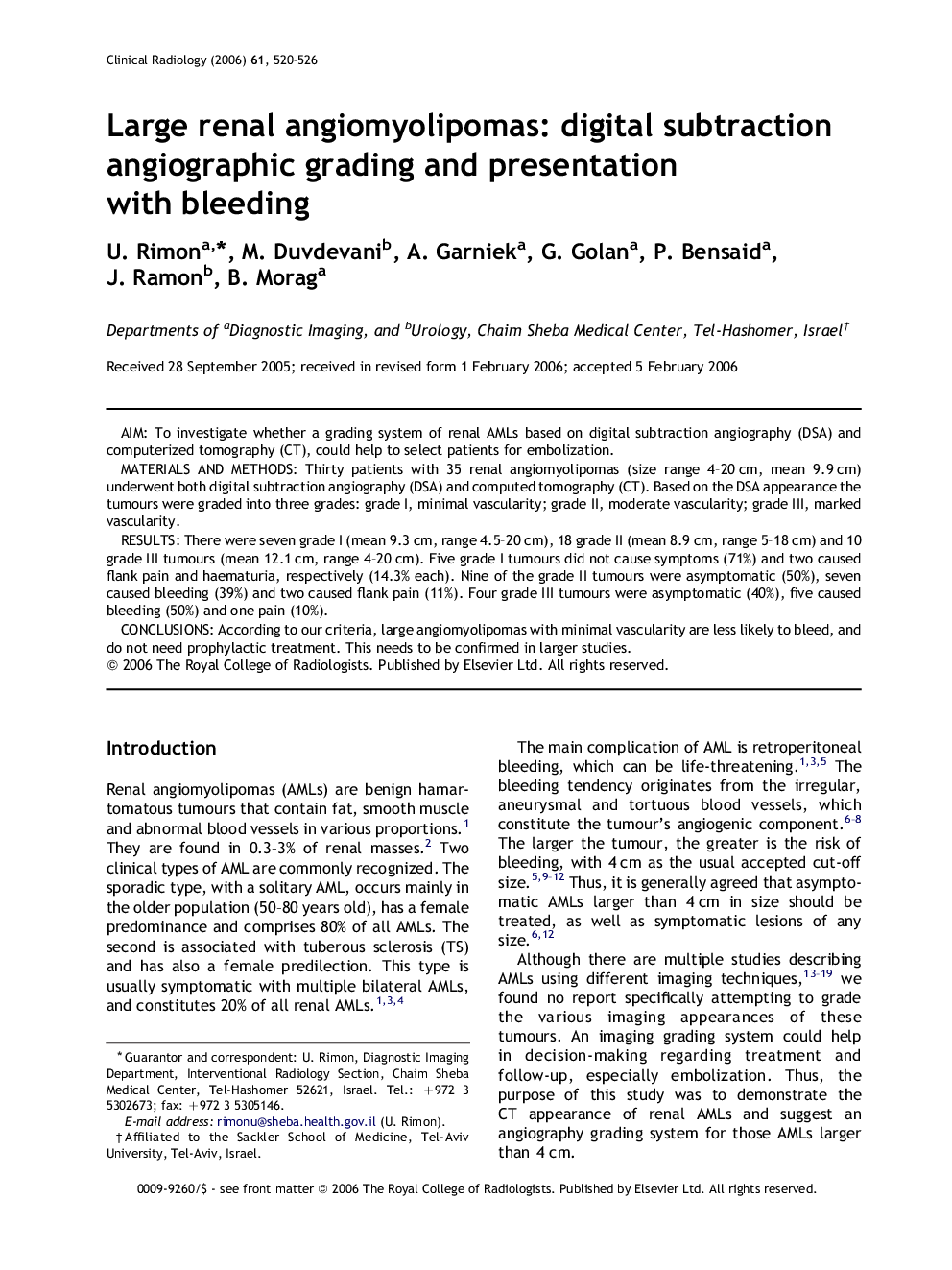| Article ID | Journal | Published Year | Pages | File Type |
|---|---|---|---|---|
| 3984236 | Clinical Radiology | 2006 | 7 Pages |
AIMTo investigate whether a grading system of renal AMLs based on digital subtraction angiography (DSA) and computerized tomography (CT), could help to select patients for embolization.MATERIALS AND METHODSThirty patients with 35 renal angiomyolipomas (size range 4–20 cm, mean 9.9 cm) underwent both digital subtraction angiography (DSA) and computed tomography (CT). Based on the DSA appearance the tumours were graded into three grades: grade I, minimal vascularity; grade II, moderate vascularity; grade III, marked vascularity.RESULTSThere were seven grade I (mean 9.3 cm, range 4.5–20 cm), 18 grade II (mean 8.9 cm, range 5–18 cm) and 10 grade III tumours (mean 12.1 cm, range 4–20 cm). Five grade I tumours did not cause symptoms (71%) and two caused flank pain and haematuria, respectively (14.3% each). Nine of the grade II tumours were asymptomatic (50%), seven caused bleeding (39%) and two caused flank pain (11%). Four grade III tumours were asymptomatic (40%), five caused bleeding (50%) and one pain (10%).CONCLUSIONSAccording to our criteria, large angiomyolipomas with minimal vascularity are less likely to bleed, and do not need prophylactic treatment. This needs to be confirmed in larger studies.
